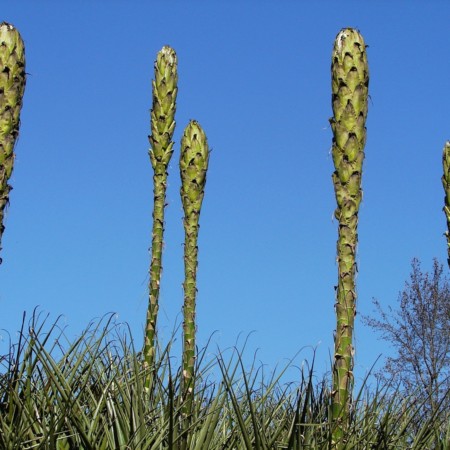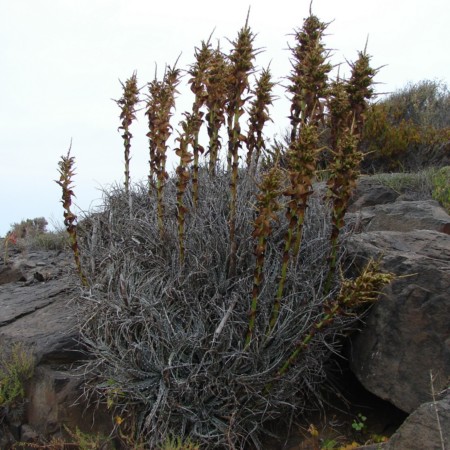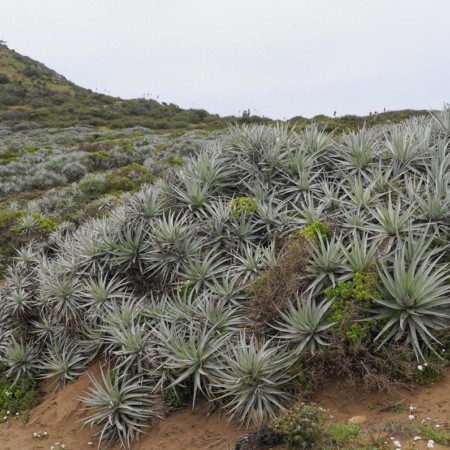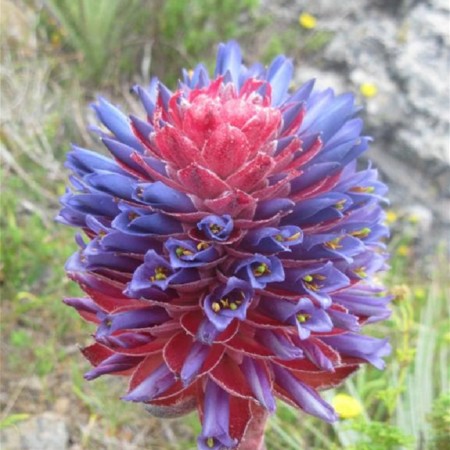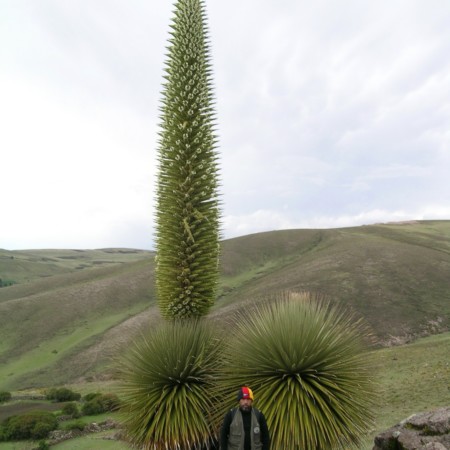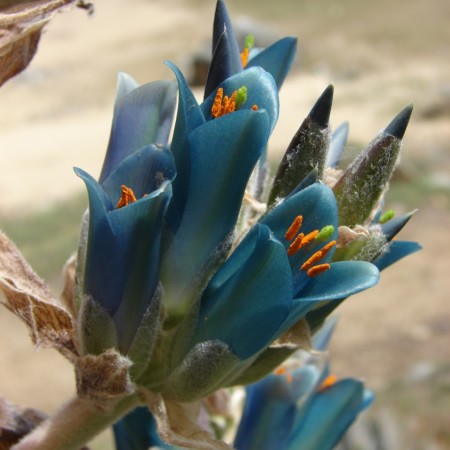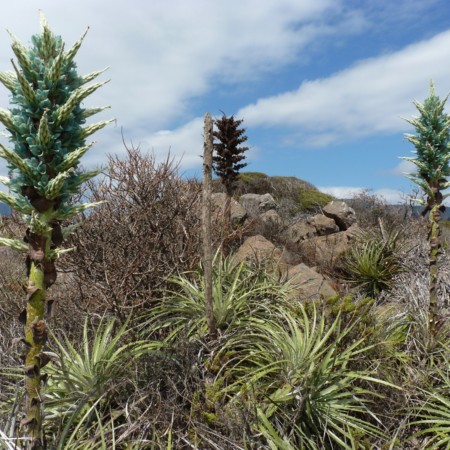(Photograph = hybrid Puya venusta, Patricio Novoa Quezada)
Introduction
Puya plants are members of the pineapple family. The various species are native to the Andes Mountains of South America and southern Central America. Some of the species are like agaves; they are monocarpic, and their rosette dies after growing for many years and then flowering.
The Details
The species P. raimondii is the largest species of bromeliad known and the best known Puya species. The foliage alone can reach 10-ft tall and the flower spike can easily reach 30-ft tall. Other Puya species are large and noticeable in a landscape, but they are not as large as P. raimondii. Puya flowers are produced in clusters on a central spike. The flowers may be large and exotically colored, e.g., blue-green petals. Plants may take 50 to 80 years to mature and produce the small wind-blown seeds. Mature P. raimondii can produce over 10 million seeds.
There are potentially dozens of species, but often only eight are considered Puya and the remainder are placed in Puyopsis. The various species often grow in small populations of dozens or hundreds of individuals, often in rocky areas or in porous soils. Thus, populations are susceptible to disturbance by humans or fire due to their small sizes.
Smaller plants, not of flowering size, are suitable for growth in large pots in areas that don’t suffer extreme frosts. The plants must be kept relatively dry and need fast-draining soil. Water logging can kill.
Additional Reading: Puya Phylogenetics

